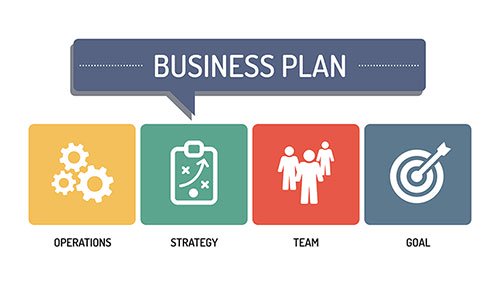Over 37 million adults in the UK regularly read magazines. Whether online or on paper, the allure of perusing pages packed with interesting information is still going strong, 400 years since the first mag was published.
From baking to beauty and gardening to gossip, there’s a publication to match every hobby and to ignite many new interests.
With dozens to choose from on newsstands across the country, you might have decided that there’s one missing – yours.
If your dream is to launch a successful magazine, there’s a lot of work to do before you can enjoy soaring circulation figures.
Beyond the hours of preparation and lists of start-up costs, you’ll be entering a highly competitive market. And if your plans involve a printed version, be aware that annual numbers of printed magazines bought declined from 820.1 million in 2011 to 422.3 million in 2017.
But, if you find your niche, secure your finance and plan carefully, your editorial enterprise could be very lucrative.
Here we delve deeper into how to write the ideal. Follow it and soon you could be spotting people adding your magazine to their shopping trolley or happily devouring its contents on the train.
Why Do I Need A Business Plan For a Magazine?

Like any business, launching a magazine requires a carefully-considered, professional approach.
Beyond filling the pages with compelling content precisely targeted at your readers, you’ll first and foremost be running a business. You’ll need more than an ounce of acumen to secure your subscription base.
Your job will require you to:
- Recruit, train and engage staff
- Sell ads, regularly and consistently
- Persuade readers to take out a subscription and regularly part with their money
- Maintain circulation figures to attract advertisers
- Create and run an appealing website
- Organise production and printing
- Establish an efficient distribution system
- Set up an exceptional customer service offering
- Keep content fresh and engaging
At the heart of any successful start-up is a solid business plan. Your magazine business plan has to clearly set out your intentions for you, your team and your investors.
Read on to discover how to start your magazine adventure with the help of a well-structured and effective business plan.
Template Business Plan For a Magazine

1. Executive Summary
Kick off your business plan with a concise but informative executive summary. This should feature the key top-line points about your business: its name, aims and mission statement along with a financial summary.
Industry-specific detail can include:
- Both the name of your publishing company and the magazine(s)
- Target readership and how you’ll attract them
- Circulation targets for the first three years
- Frequency of publication
- Your magazine’s USP
Your mission statement should sum up your vision: focus on your audience and what your magazine will give to them.
Position the opportunity you’re taking advantage of, outlining the problem you’ve spotted and the solution you’ve devised. Will expert writers be sharing advice and insight? Will an online community provide a platform for exchanging ideas and tips?
From your executive summary, you can also extract juicy information to write an elevator pitch: your plans in a 60-second nutshell.
What would you tell a stranger in a lift about your business? What’s it called? Who’s it aimed at? What makes it unique? Aim to write a pitch that couldn’t apply to any other magazine on the market.
Perfecting this at an early stage will crystallise your vision. And, of course, allow you to spread the word about your magazine quickly and convincingly.
2. Objectives
Set yourself ambitious but achievable objectives right from the start. As well as giving you something concrete to aim for, sharing them will also provide ongoing accountability. When colleagues, friends and family know your targets, they’ll be keen to encourage you to strive for them.
So don’t just type them into a document and forget about them. Print them out in large fonts, stick them on your office wall, use them as your laptop and phone wallpaper: make them real.
And make them SMART: specific, measurable, achievable, relevant and timely. You could even make them SMARTER: adding evaluated and reviewed to your initial criteria.
In your magazine business plan, you could include KPIs such as:
- To raise £XX to cover initial publication costs and establish a cash reserve
- To publish XX pages in issue one, rising to XX pages by issue four
- To print XX copies of issue one, rising to XX copies of issue four
- To increase the advertising rate card by XX% by the end of year one
- To increase average number of ad pages sold from XX in issue one to XX in issue four
- To have XX subscribers by the end of year one
- To sign up XX subscribers to a regular payment plan, e.g. Direct Debit, by the end of year one
3. Market Analysis
To make an impact on the newsstands, you need to know – and understand – the competition. Ask yourself the following:
- What titles are already out there? Who publishes them? Are they multi-nationals with megabucks or small start-ups?
- How high, or low, is their circulation? How many ads do they feature? What kind of companies advertise – major brands or niche companies? How much do they charge? What proportion of advertisers pay the rate card and how many get a discount?
- Do they publish online as well as in print? Do they have an app?
- Are there already magazines based on a similar topic to yours? If so, is there room for another one? What will your USP be?
Alongside your rivals, you also need to research your target readers. Identifying them and getting under their skin is crucial to success.
So, define your audience as precisely as possible:
- Where do they live?
- What do they do?
- How old are they?
- What is their income?
- What are their interests?
- What qualifications do they have?
- What magazines do they currently read?
From there, think about the size and potential of that group and how you can reach them. Then use this to inform your sales and marketing strategy.
4. Business Structure

Make sure to outline your business structure clearly. Are you operating as a limited company or a partnership? How many staff will your team consist of? What approach are you taking to staff welfare and engagement? Why will talented people want to work on your magazine?
Stress how your employees will add to your competitive advantage by focusing on their strengths and the breadth of the roles available.
Depending on the restrictions of your budget and the extent of your ambitions, your magazine could need:
- CEO/Editor-in-chief
- HR manager
- Office manager
- Journalists and writers, probably with distinct specialisms
- Sub-editors and proofreaders
- Photographers
- Graphic designers
- Website manager
- Sales and marketing manager
- Sales team
- Subscriptions manager
- Accountant
- Distribution manager
- Customer service executives
As part of your business plan for a magazine, you can describe each of these roles and accompanying responsibilities in detail.
Highlight how your team will cover all bases to ensure high quality content, strong advertising revenue, a reliable distribution network and a loyal subscription base. Along with, of course, all the departments necessary to run a successful business: HR, accounts, customer service etc.
5. SWOT Analysis

Assessing the potential of your business, taking all criteria into consideration, will reassure prospective investors that you understand the challenges ahead.
The easiest way to do this is through a SWOT analysis: examining the strengths, weaknesses, opportunities and threats to your business that can impact on whether you sink or swim.
-
Strengths
Share your strengths with confidence. Ensure that they position you as professional and prepared, ticking off the basics and beyond.
These could include the calibre of your writers, the award-winning portfolio of your chief photographer or your personal track record of running a profitable business.
-
Weaknesses
Don’t be shy or overly-cautious. Recognising your weaknesses, and all start-ups have them, shows that you’ve spotted the potential pitfalls and are taking steps to address them.
Maybe you’re aware that your current funding isn’t sufficient to cover your ambitious marketing campaign or perhaps you’re concerned by a lack of suitable candidates during your recruitment process.
Whatever they are, turn your weaknesses around by detailing how you’re going to overcome them.
-
Opportunities
Showcase your dreams here: if you believe there’s a strong possibility of expanding your magazine brand into a book, an app or even a reader event, say so. Use this chance to express your passion for the project and inspire the same in others.
If you’ve already secured interest from advertisers, add it here. And if you’ve completed any market research, pick out the highlights that present the best opportunities for growth.
-
Threats
Be honest about threats. Demonstrate your understanding of the market and how it could jeopardise your future plans. Will the effects of Brexit deter advertisers? Could distribution costs spiral as you grow? Could you survive if a major publisher launched a rival title?
6. Sales and Marketing
Who came first, the reader or the advertiser? Neither can exist without the other. Both are vital to your success.
A comprehensive approach to marketing will make sure you secure sufficient income from each. Use your magazine business plan to outline what strategies you’ll be employing to achieve this.
For instance, maybe you’re recruiting a marketing team with an excellent industry track record. You’ll be encouraging them to hit their targets through ongoing training and incentives.
To initially attract readers, you could devise a direct mail campaign with sample content from your magazine. Accompanied by an enticing offer – try your first edition free – the responses will soon start to populate your customer database.
To spread the word to possible advertisers, introduce your title to companies large and small, ad agencies and, if relevant, public sector bodies. Hold events, send sample copies, gather feedback, offer deals and make your magazine memorable asap.
To establish your brand online, set up social media accounts and get the conversations about your magazine started.
Be thorough here. Your marketing will determine if your idea makes or breaks so have a clear vision early on about how it will work and what you want it to achieve.
7. Finance
 Last but most definitely not least, any business plan for a magazine worth its salt needs an in-depth section about money.
Last but most definitely not least, any business plan for a magazine worth its salt needs an in-depth section about money.
Like all new businesses, getting your enterprise off the ground requires detailed financial planning and management. You’ll need to cover off start-up costs, ongoing expenditure and income generation, sales, profit and loss, and cashflow forecasts, and your pricing strategy.
Alongside this, you need to outline the source of your funding, plus any shortfall you still need to secure.
At this stage, start-up costs should be looming large on your agenda. List them clearly in your business plan to demonstrate that you understand the financial commitment.
Your initial budget for the first three months will likely include:
- Staff and/or freelance wages
- Office space rental fees
- Distribution costs, including vehicles
- Printing costs
- Equipment purchase/hire, e.g. computers, printers, phones and office furniture
- Website design
- Consultant fees
- Insurance
- Advertising and marketing
- Stationery
- Utilities
Start-up costs will be lower if you’re planning an online-only publication but still need to be carefully researched and recorded.
Your appendix should include spreadsheets covering cashflow, profit and loss forecasts, and sales forecasts. Each should include projections for at least the first three years.
Of course these will be based largely on guesswork but provided they’re backed up by your research and accurately calculated, it gives an indication of what is achievable.
8. Conclusion
End your magazine business plan on a positive note. Recap on your aims and vision, focusing on your passion and commitment while highlighting that you have the knowledge, experience and dedication to make your business a success.
Be prepared and you’ll be one step closer to taking the helm of a magazine that enjoys impressive circulation, happy advertisers and a healthy profit.












